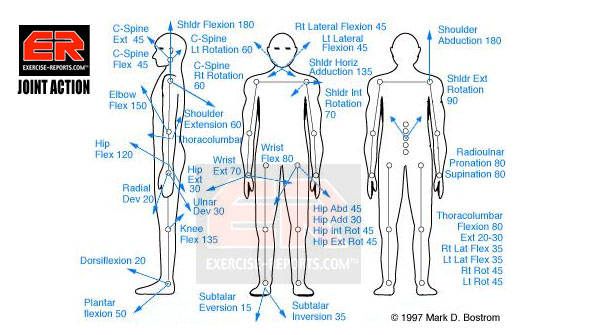
Human Joint Action Angles are the “normal” ranges of motion for a human being. Many human beings do not function with these full ranges of motion for a variety of reasons, including specific joint structural limitations, muscle shortening, lax joint structures, and injuries, etc.
Here is a sample of many exercise names with their actual Joint Actions, which is a more universally understandable description …
Common Name ===> Actual Joint Action Descriptor
Leg Extension = Knee Extension
Leg Curl = Knee Flexion
Shoulder Front Raise = Shoulder Flexion
Biceps Curl = Elbow Flexion
Triceps Pressdown = Elbow Extension
Note: Horizontal abduction may be better described as transverse adduction.
An anatomical plane is a hypothetical plane used to transect the human body into two portions or halves. The concept is used to describe the location of structures or the direction of movements. Anatomical planes are used in human and animal anatomy, with three principal planes or Cardinal Planes are used:
The coronal plane or frontal plane (vertical) divides the body into ventral and dorsal halves or front and back halves. Think of a front portion and back portion; or anterior and posterior halves or portions.
The chest plane and abdominal wall are parallel to the coronal plane.
To fully appreciate the coronal plane, the observer would look at the standing human body face-to-face.
The sagittal plane or median plane (longitudinal, anteroposterior) is a plane parallel to the sagittal suture. The sagittal plane divides the body into left and right halves or portions. The sagittal plane is also perpendicular to the coronal plane.
To fully appreciate the sagittal plane, an observer would look at the human body from the vantage point of either side.
The transverse plane or axial plane (lateral, horizontal) divides the body into cranial and caudal (head and tail or top and bottom) halves or portions. The transverse plane is parallel to the floor when a human is standing in the anatomical position or otherwise standing normally in every day life.
To fully appreciate the transverse plane, an observer would look at downward at the standing human body from the vantage point of the ceiling.
